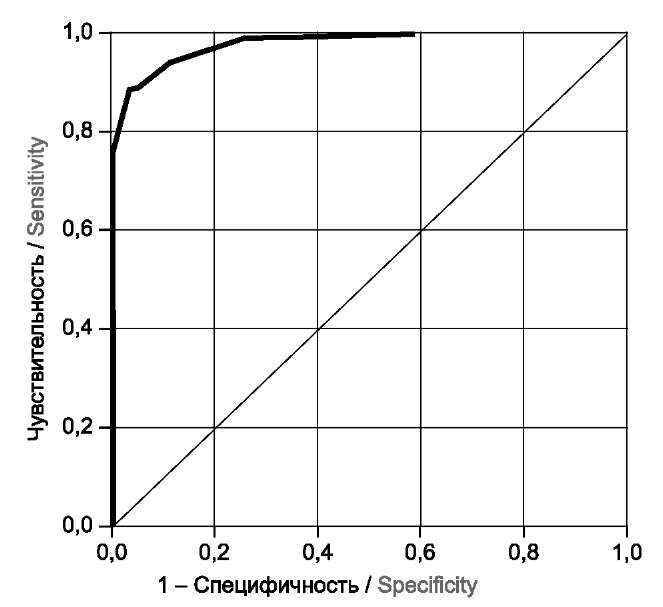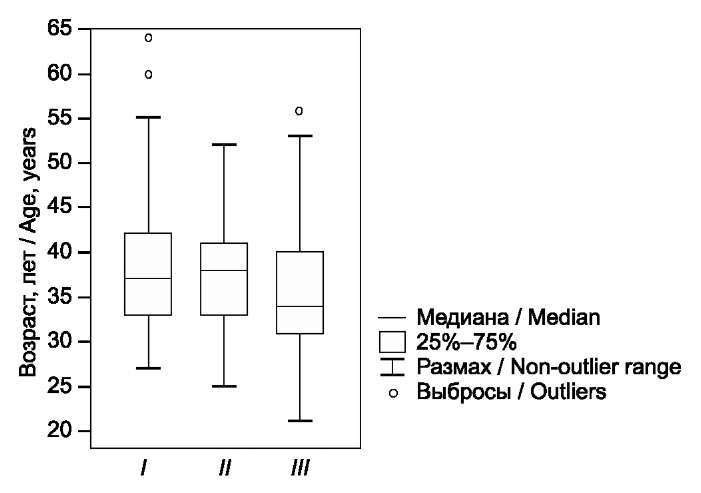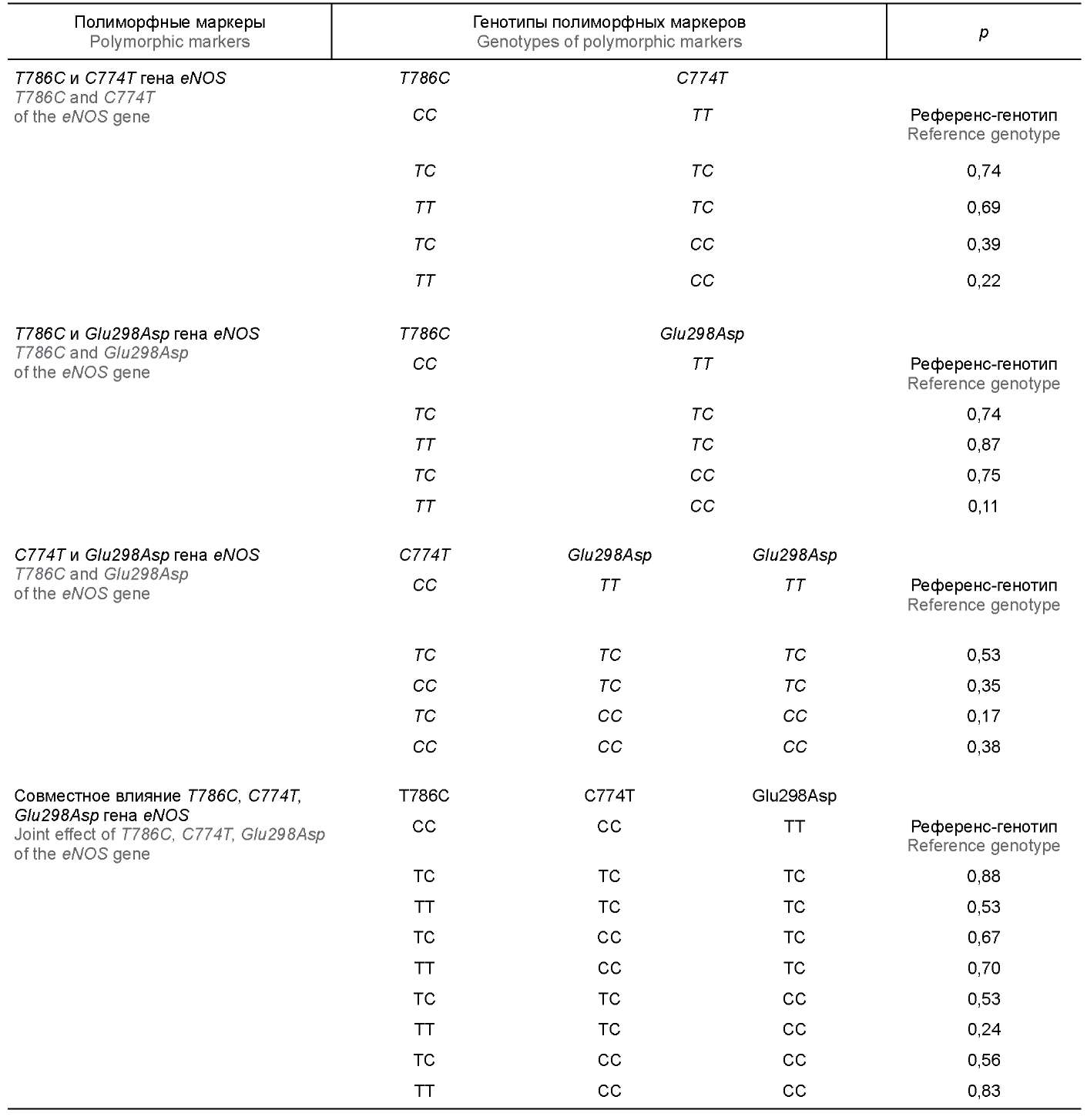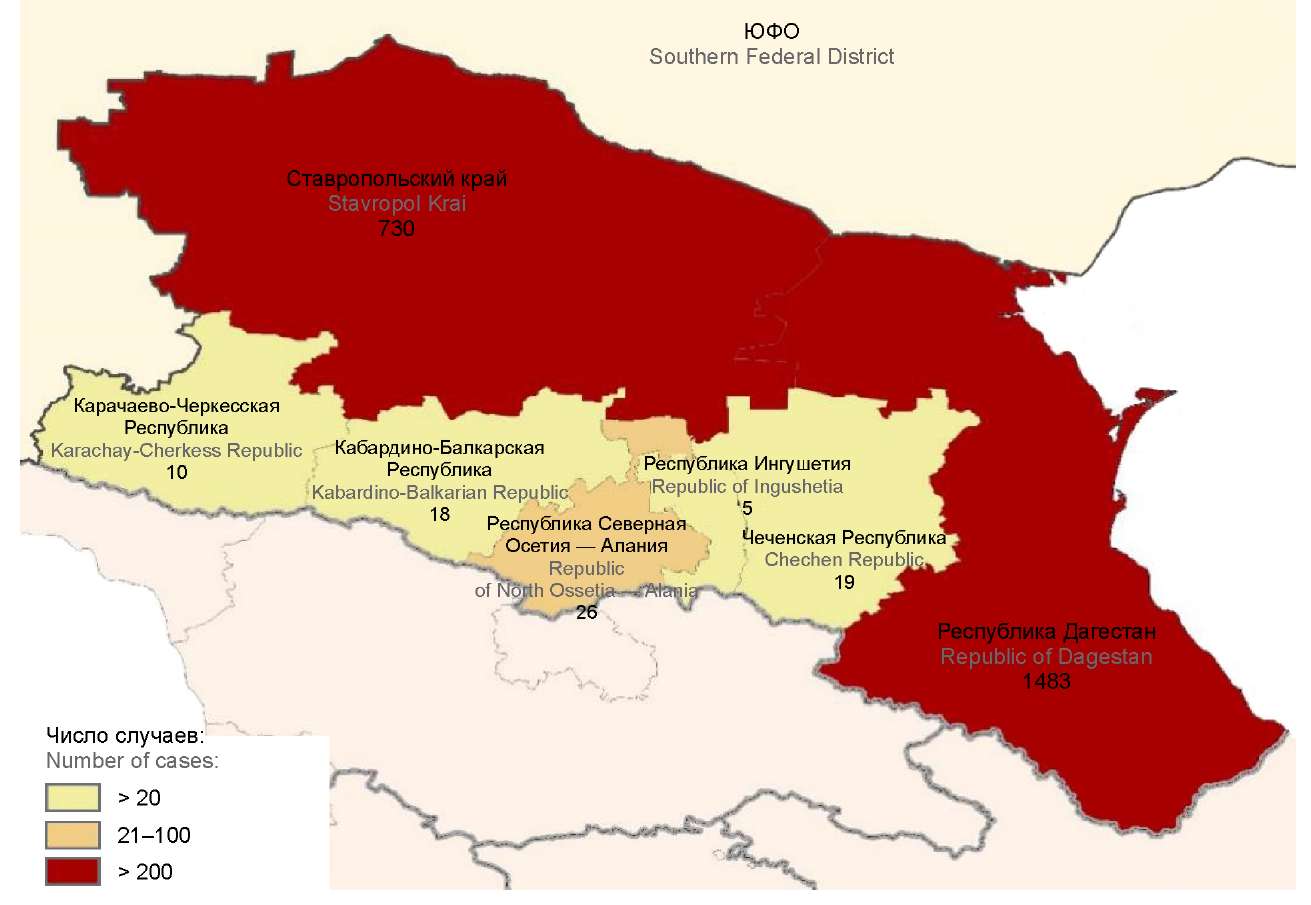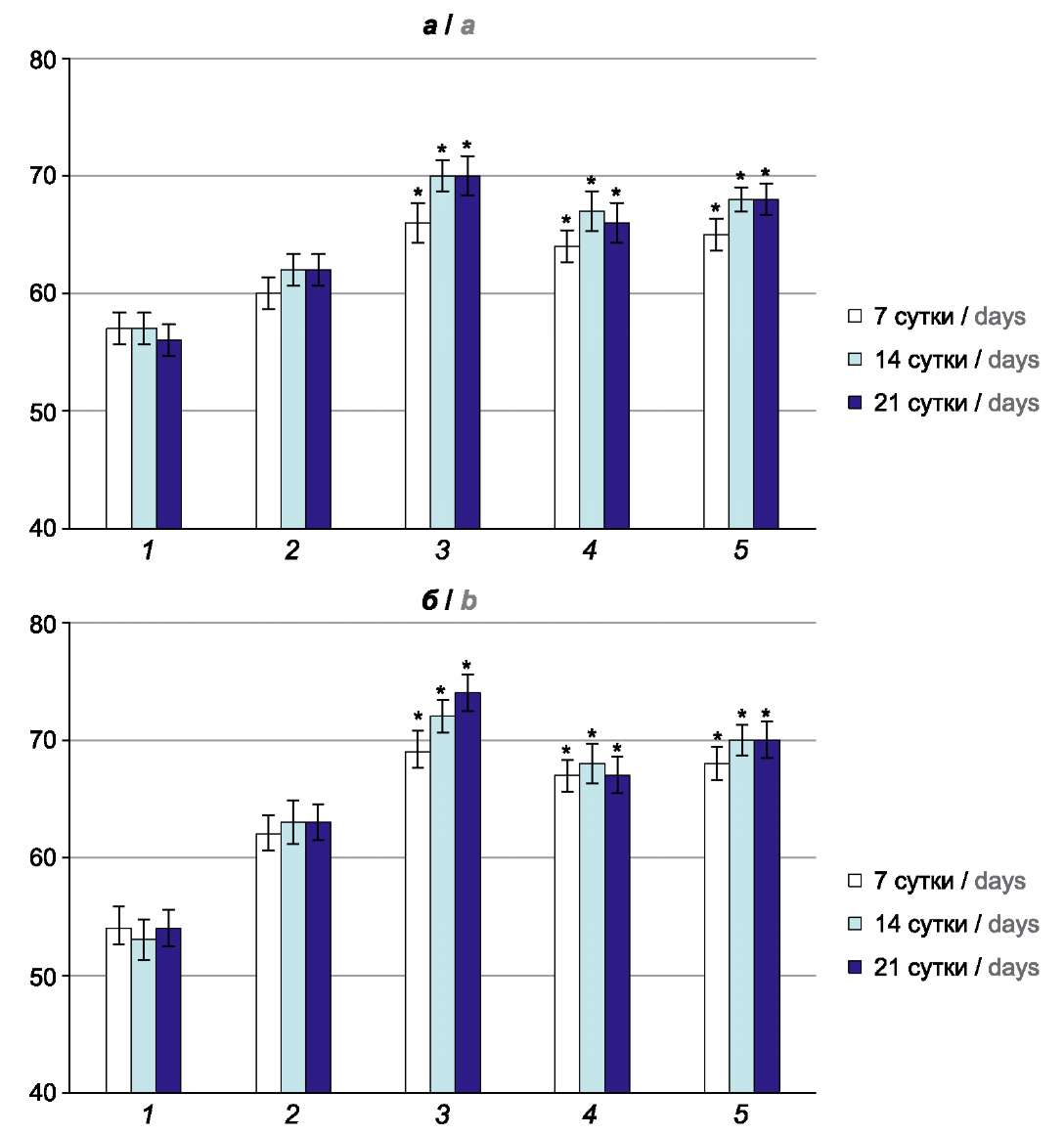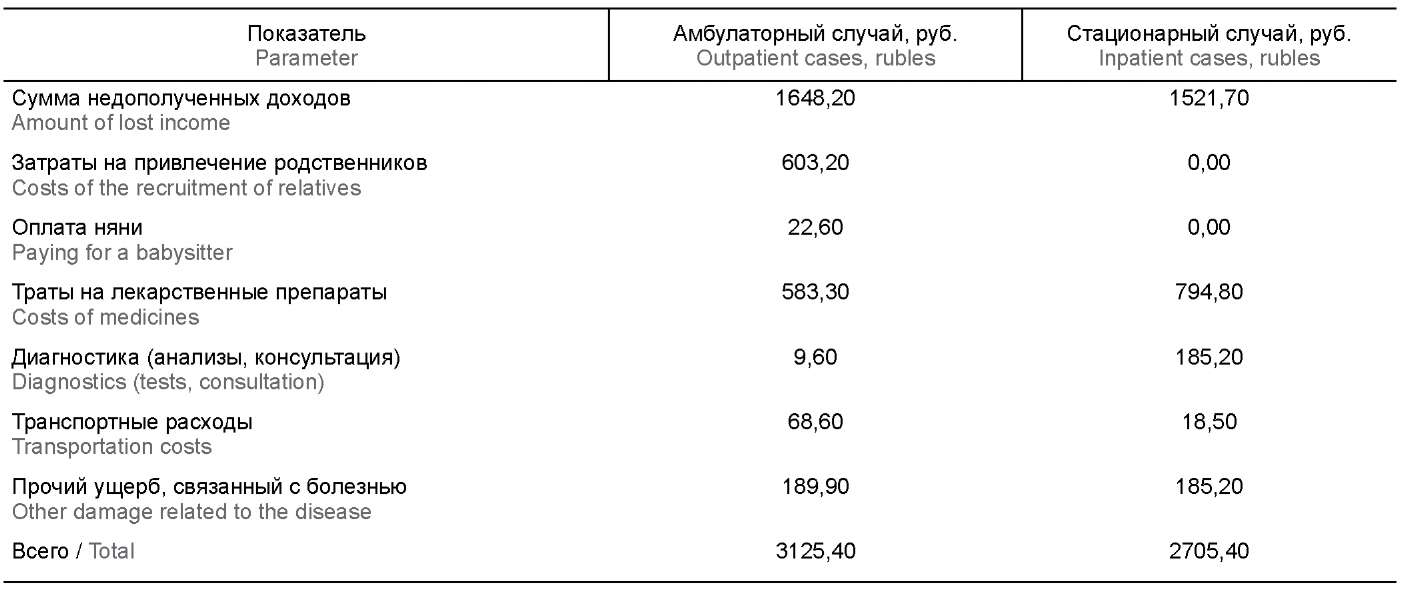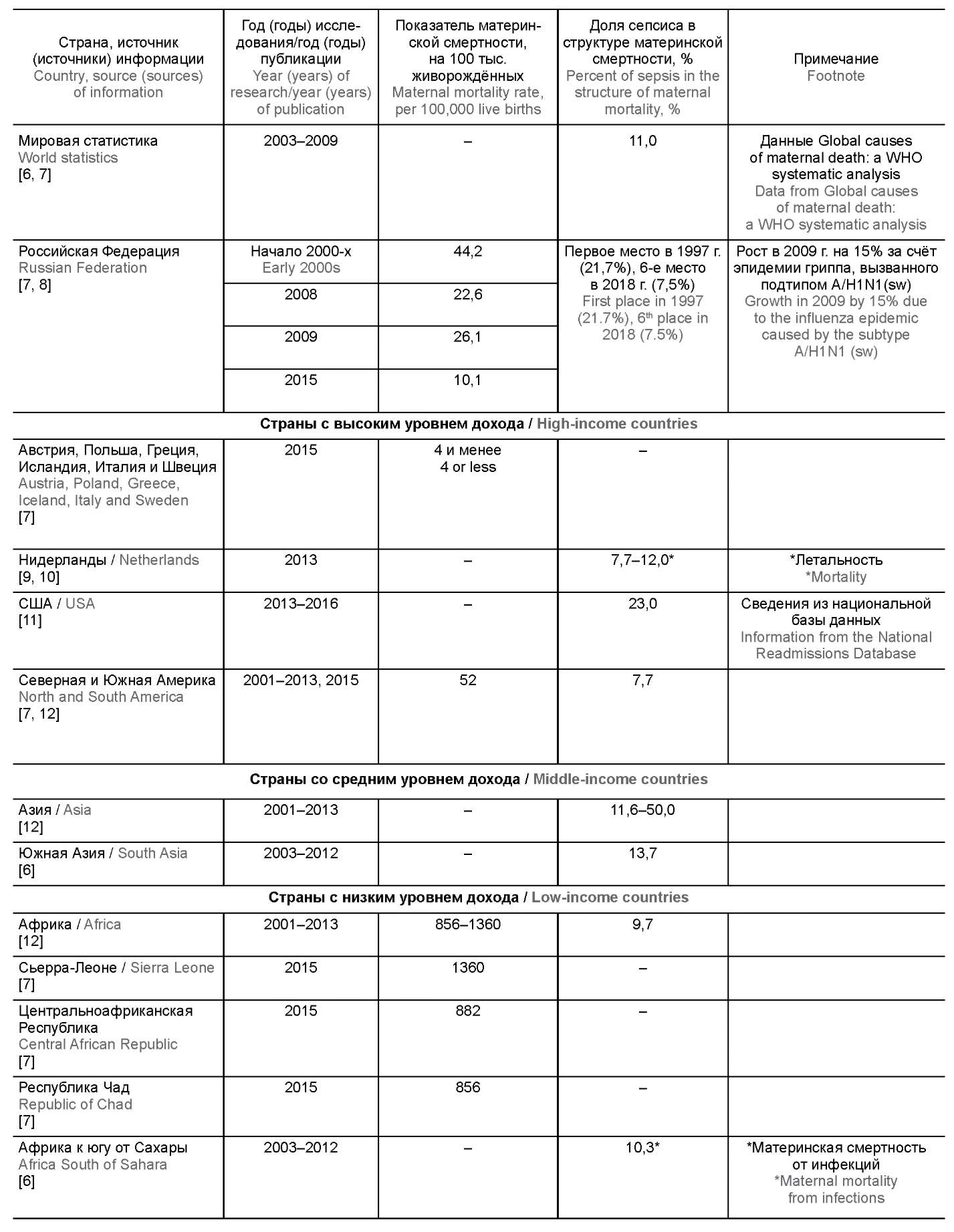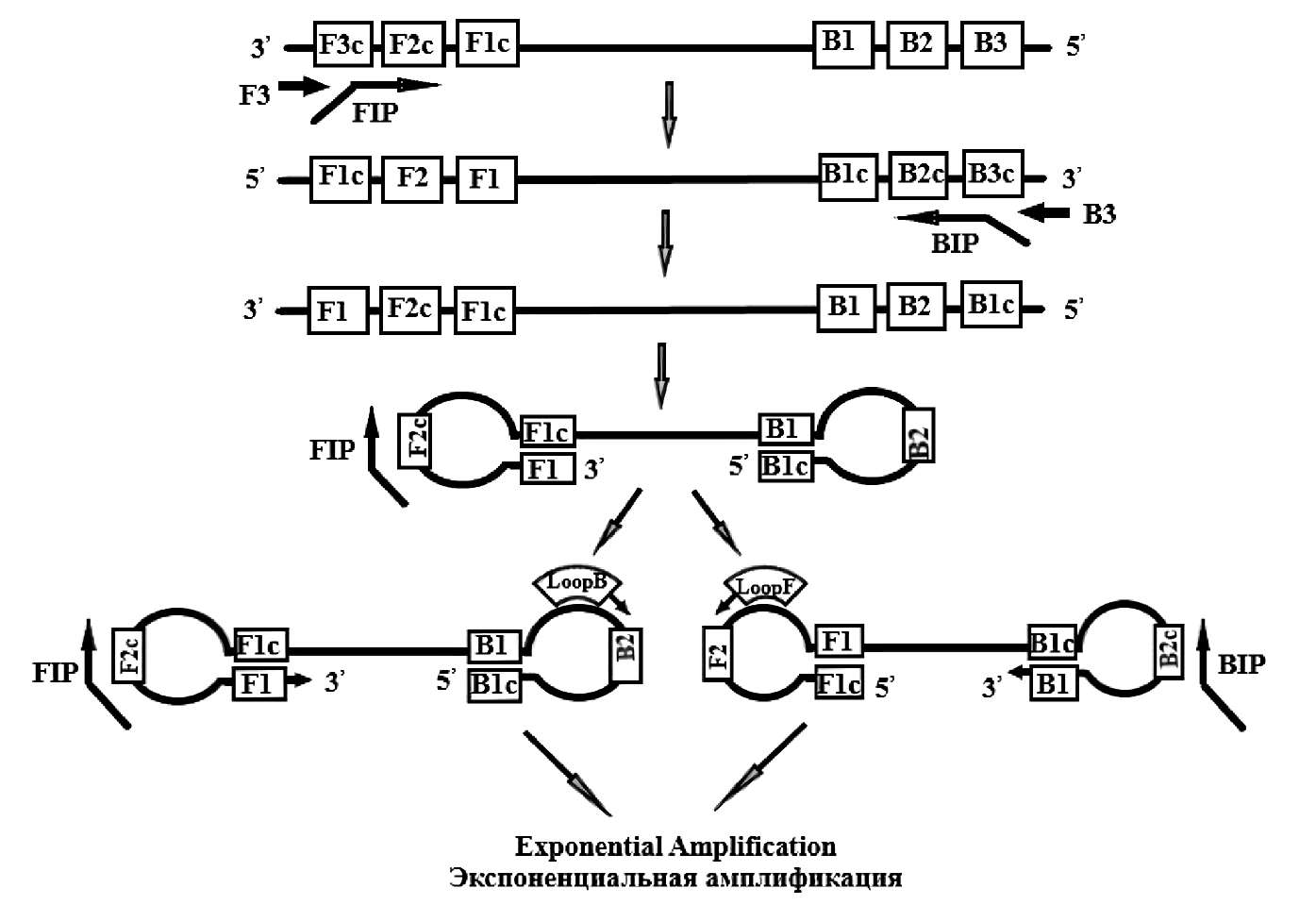Vol 99, No 1 (2022)
- Year: 2022
- Published: 10.03.2022
- Articles: 13
- URL: https://microbiol.crie.ru/jour/issue/view/48
Full Issue
ORIGINAL RESEARCHES
Molecular and genetic characteristics of group A rotaviruses detected in Moscow in 2015–2020
Abstract
The aim of the study was to analyze genetic characteristics of strains belonging to group A rotaviruses (RVA) circulating in Moscow in 2015–2020, including rare strains non-typeable by polymerase chain reaction (PCR).
Materials and methods. A total of 289 stool samples were tested; the samples were collected from children aged 1 month to 17 years, hospitalized with acute gastroenteritis. Immunochromatography and real-time reverse transcription-polymerase chain reaction (real-time RT-PCR) assays were used for detection of rotaviruses in the samples. The rotavirus genome sequencing was performed using the Sanger technique and nanopore sequencing.
Results and discussion. RVA RNA was detected in 131 clinical samples, and the G/[P] genotype was identified in 125 samples. The general profile showed prevalence of RVA strains with the G9P[8]I1 genotype (37%) followed by G3P[8]I2, G4P[8]I1, G2P[4]I2, G1P[8]I1, and G3P[8]I1 variants (18, 15, 11, 5, and 2%, respectively). Seven (5%) isolates were identified as GxP[8]. In 2015–2020, the region reported a decline in G4P[8]I1 genotype prevalence (from 39% to 9%) and an increase in the proportion of the G9P[8]I1 genotype (from 6% to 37%) as compared to 2009–2014. In 2018–2020, a large number of cases with the previously unknown DS-1-like reassortant strain with the G3P[8]I2 genotype were reported; the above strain has become widely common worldwide in the recent years. Nanopore sequencing was performed to analyze the genome of the G3P[8]I2 strain and the rare G4P[6]I1 strain. It was found that the G4P[6]I1 strain was phylogenetically related to porcine rotaviruses.
Conclusion. In the recent years, the genetic diversity of RVA circulating in the Moscow Region has changed significantly. The obtained results prove the importance of continuous monitoring of rotavirus infection and selective sequencing of RVA genes to fine-tune data of the type-specific real-time RT-PCR. The ever-changing genetic composition of the circulating RVA strains calls for regular optimization of RVA genotyping systems based on real-time RT-PCR.
 7-19
7-19


Genetic diversity and drug resistance mutations of HIV-1 in Leningrad Region
Abstract
Introduction. The spread of the human immunodeficiency virus type 1 (HIV-1) has become a global concern and has approached the pandemic status. St. Petersburg, a major transportation, tourist, cultural, industrial center, and a border city, is characterized by high migration of the population. The growing number of migrants can contribute to importation and spread of new genetic variants of the virus and trigger recombination processes in the virus population in St. Petersburg and the Leningrad Region.
The aim is to characterize the present-day HIV-1 subtype-specific profile and drug-resistance mutations among patients with virological failure on antiretroviral therapy (ART) in the Leningrad Region.
Materials and methods. The study performed in 2016–2018 was based on clinical material from HIV-infected individuals living in the Leningrad Region and having confirmed virological failure on ART. The genetic diversity and distribution of drug-resistance mutations of the HIV-1 isolates were assessed through analysis of nucleotide sequences of the virus pol gene fragment that included regions encoding protease and the reverse transcriptase region.
Results. In the group (n = 138), most of the patients had sub-subtype A6 (97.4%) common in Russia, though a few patients had subtype B and a recombinant containing circulating recombinant form CRF_03AB and sub-subtype A1. The tests showed that 95.79% of patients had at least one significant drug-resistance mutation; in most cases (73%) the virus was resistant to 2 classes of antiretroviral drugs and in some cases (8%) — to 3 classes. A total of 105 different drug-resistance mutations were found at 35 positions of the virus genome.
Conclusions. The high prevalence of HIV-1 drug-resistance mutations among ART patients with virological failure calls attention to surveillance of drug resistance of the virus both among ART-experienced patients and ARTnaïve individuals.
 28-37
28-37


Analysis of risk factors affecting the HIV epidemic process in the penitentiary system
Abstract
Introduction. For more than 10 years, the Tumen Region has been reporting steadily high rates of HIV infection prevalence. Among the groups at risk for HIV infection, a special place is occupied by the group of incarcerated individuals. This group is mostly represented by drug users, men who have sex with men, commercial sex workers. Diseases acquired during imprisonment or exacerbated in a prison setting become a problem not only for released inmates, but also for communities outside the prison system. Epidemiologically, it is critically important to identify the prison-related factors contributing to HIV progression, considering their unequal significance among incarcerated individuals and civilian population.
The aim of the study is to identify and assess the risk factors affecting the HIV epidemic process in the high riskgroup density areas.
Materials and methods. The study was performed using epidemiological study and stepwise logistic regression methods.
Results. Since 2008, the epidemiological situation in prison settings has become increasingly severe, being characterized by higher rates of detection of HIV cases and HIV prevalence among inmates. The situation has also been aggravated by high death rates among HIV-infected inmates. Our study found that the high risk of fatal outcomes in HIV-infected inmates was associated with multiple parameters: the male gender, parenteral (injection drug use) HIV transmission, existing comorbidities – viral hepatitis and thoracic diseases.
 20-27
20-27


HIV-1 subtype diversity, phylogenetic analysis and study of drug resistance in strains circulating in the Ural Federal District
Abstract
Introduction. Ural Federal District (UFD) has been one of the most HIV-affected areas in the Russian Federation during past 20 years. The total number of people living with HIV/AIDS (PLWH) and receiving antiretroviral therapy (ART) exceeds 100,000 (61.7% of all PLWH in the UFD), which creates opportunities for the wide spread of resistant HIV strains.
Research aim was to determine the distribution of HIV-1 subtypes, evaluate the genetic heterogeneity of HIV-1 strains, and analyze the prevalence of HIV-1 drug resistance mutations (DRM) and the incidence of acquired resistance to antiretroviral drugs (ARVDs) in PLWH receiving ART in the UFD.
Materials and methods. 223 patients receiving ART at stage III–IV of HIV infection living in the UFD were examined. To determine the subtypes and the DRM in the HIV-1 pol gene, molecular genetic studies were performed using the AmpliSense® HIV-Resist-Seq kit by Sanger sequencing on the Applied Biosystems 3500 Genetic Analyzer. The genetic heterogeneity was evaluated by calculating the identity of the genome region of the isolated strains in comparison with the genomes of foreign HIV strains, as well as using phylogenetic analysis.
Results. In the studied group of patients, 5 subtypes of HIV-1 were identified: subtype A6 prevalence was 91.03%, that of subtype B was 2.69%, 3 recombinant subtypes (CRF03_A6B, CRF02_AG, CRF63_02A6) accounted for 6.28%. Among analyzed HIV-1 strains, 43.9% had a significant genetic similarity (identity of at least 97%) with the strains isolated from patients from neighboring countries (Belarus, Kazakhstan, Kyrgyzstan, Uzbekistan, Lithuania), 35.9% were similar to the strains isolated from patients from far-abroad countries (USA, China, South Korea, Australia, Sweden, Germany). A high heterogeneity of the circulating genetic variants of HIV-1 strains in the territory of the UFD region was established, which is an unfavorable factor for the diagnosis and treatment of HIV. The most common DRMs to both nucleoside reverse transcriptase inhibitors (NRTI) and non-nucleoside reverse transcriptase inhibitors (NNRTI) were detected in 81 specimens (36.3%). NRTI resistance-forming M184V DRM was more common than any other DRM with statistical significance (p = 0,0008) and was detected in 88 specimens (39.5%).
Conclusion. In the subtype structure of HIV-1, the dominant subtype was subtype A6, the most common in the countries that were formerly part of the USSR. The heterogeneity of the HIV-1 strains circulating in the UFD suggests that HIV-1 infection continues to be introduced into the UFD from populations outside the Russian Federation. The findings confirm the high prevalence of DRMs (62.8%) and secondary drug resistance of HIV-1 (60.1%) among PLWH in the territory of the UFD. At the same time, high-level resistance was detected in 56.5% of patients, which requires increasing the coverage of HIV resistance testing, including the introduction of monitoring for primary resistance, in order to optimize first-line ART regimens.
 38-53
38-53


The role of eNOS gene polymorphisms in immunopathogenesis of primary open-angle glaucoma
Abstract
Introduction. Pathologies of the visual organ (keratitis, glaucoma, etc.) occupy a leading place among the causes of vision loss and blindness. According to the literature, the immunopathogenesis of bacterial keratitis is associated with the activation of macrophages and oxygen explosion. The role of these mechanisms in the pathogenesis of primary open-angle glaucoma is not fully understood. There are isolated studies in which the development of this pathology is associated with nitric oxide NO, which is produced by endothelial NO synthase (nos). However, despite numerous studies, the role of immunogenetics in the pathogenesis of glaucoma remains insufficiently researched.
The aim of the study is to explore the association of T786C, C774T, Glu298Asp polymorphic markers of the eNOS gene with development of POAG in residents of the Perm Territory.
Materials and methods. The study was performed using peripheral blood collected from 93 patients with POAG and 96 patients with cataracts. The real-time polymerase chain reaction was performed after the DNA extraction. The frequencies of alleles and genotypes in the study groups were measured using the chi-square (χ2 ) test and Fisher’s exact test. Results with p < 0.05 were seen as statistically significant. The calculated odds ratio and the 95% confidence interval were used to quantify the association between POAG development in patients and the existence of an unfavorable polymorphic marker.
Results. The C774T and Glu298Asp markers did not show any significant differences in the distribution of genotypes and alleles of the eNOS gene. Higher frequencies of the homozygous TT genotype; and lower frequencies of the C allele of T786C polymorphic locus of eNOS gene were detected in patients with POAG.
Conclusion. Polymorphic markers of the eNOS gene can be seen as factors associated with the risk of POAG.
 54-62
54-62


Analysis of cases of brucellosis in humans and molecular-biological characteristics of Brucella melitensis strains in regions of South European Russia with a high brucellosis incidence
Abstract
Introduction. To improve the epidemiological surveillance of brucellosis in Russia, a detailed analysis of incidence and characteristics of Brucella melitensis strains circulating in the territories of the country where there is a persistent epizootic and epidemiological problem with brucellosis is required.
Purpose of the study. To study current trends in the brucellosis epidemic process and perform molecular analysis of Brucella isolates from the territories of Southern and North Caucasian Federal Districts with long lasting unfavorable situation with brucellosis — the Republics of Dagestan (RD), Kalmykia (RK) and Stavropol Krai (SK).
Materials and methods. The analysis of the brucellosis incidence in the North Caucasus Federal District and the Southern Federal District was carried out on the basis of data from the Rospotrebnadzor Departments for the period 2011–2020. Total 56 cultures of Brucella melitensis, isolated in 1999–2019 from patients with brucellosis that permanently resided in RD, RK and SK were studied.
Results. The key factor contributing to the epidemic manifestations of brucellosis in the south of the European part of Russia is the persistence of epizootic foci in cattle and small ruminants. The leading concomitant factors are as follows: the presence in the region of "hidden" epizootic foci, uncontrolled production of food products of animal husbandry and its illegal sale to customers, unauthorized movement of animals and livestock products, untimely delivery (concealment) of sick cattle for stamping out. Results of molecular analysis of B. melitensis strains indicate the circulation of a mixed population of brucella, which is generally characteristic of the entire region, without a pronounced confinement of isolates to separate administrative territories. At the same time, the entire studied sample of strains can be divided into two groups (72% and 28% of strains) based on MLVA-16 genotypes by the variability in the Bruce 19 locus, which makes it possible to associate a part of the studied strains with the territory of their isolation.
Discussion. The data obtained make it possible to scientifically substantiate the possibility of considering the affected territories of the Southern Federal District and the North Caucasian Federal District as a single common persistent active anthropurgic epizootic focus with circulation of a mixed, but typical for the region population of Brucella strains.
 63-74
63-74


The influence of immunomodulators on the formation of vaccine-induced cholera immunity
Abstract
Introduction. Due to the remaining tense situation on cholera in the world, research continues on the creation of new preventive drugs, as well as ways to increase the immunogenicity of existing anti-cholera vaccines. The combined use of vaccines with immunomodulators and cytokines is successfully used for the specific prevention of various infections, including particularly dangerous ones.
The aim of the work is an experimental study of the effect of immunomodulators on the immunogenic and protective activity of the cholera bivalent chemical vaccine in order to assess the possibility of their use to improve the specific prevention of cholera.
Materials and methods. The parameters of cellular and humoral local and systemic immune response in experimental animals vaccinated and receiving immunotherapy, as well as the effect of immunomodulators on the protective activity of antigens that are part of the cholera bivalent chemical vaccine, were evaluated.
Results. The studies revealed that the use of immunomodulators in combination with the vaccine leads to an increase in the immunogenic properties of antigens. Immunomodulators stimulate the differentiation of CD4⁺- lymphocytes, ensuring the development of an immune response mainly along the humoral pathway, increase the number of B-lymphocytes, antigen-specific antibody-forming cells, as well as secretory immunoglobulin A in the intestines of vaccinated experimental animals. It is shown that the immunomodulator glucosaminylmuramyl dipeptide increases the protective properties of the antigens that are part of the chemical cholera bivalent vaccine. It was the most effective additive, since it protected all the animals included in the experiment from generalized cholera.
Conclusion. The use of immunomodulators in anti-cholera vaccination, especially with glucosaminylmuramyl dipeptide, may be one of the approaches to improving the specific prevention of cholera.
 81-92
81-92


Assessment of the economic damage caused by varicella disease in children aged 0–17 years in the Altai Territory
Abstract
Introduction. In modern conditions, the economic analysis of the damage caused by varicella (chickenpox) is of particular importance, as it contributes to the adoption of management decisions aimed to achieve the maximum medical preventive effect.
Purpose: to assess the economic damage caused by the varicella disease in children aged 0–17 years in the Altai Territory.
Materials and methods. To estimate the costs, we used data on the incidence of varicella obtained in our previous studies, tariffs of the Territorial Compulsory Health Insurance Fund for the Altai Territory, data on the gross regional product, as well as data from a survey of parents of patients with varicella. The study was conducted based on two polyclinics in Barnaul (for outpatient patients) and the children's infectious diseases department of the Barnaul City Clinical Hospital (for hospitalized patients) for one calendar year (July 2019 – June 2020).
Results. The estimated damage caused by varicella per one year in the Altai Territory amounted to 31,527,294.87 rubles, of which 42% are expenses from the own funds of citizens (parents of children with varicella). The cost of parents' personal funds for the treatment of one outpatient case of varicella averaged 3125.4 rubles, and of inpatient case — 2705.4 rubles.
Conclusions. The expenses of the government and citizens of the Altai Territory for the treatment of varicella are very large and the disease cannot be controlled by existing preventive measures, as evidenced by consistently high incidence rates. In this regard, an accurate assessment of economic damage is necessary for proper management decisions on the introduction of new preventive measures, including vaccination.
 75-80
75-80


REVIEWS
Genetic diversity of the Epstein–Barr virus: a modern view of the problem
Abstract
In general, the characteristic of the genetic diversity of the Epstein-Barr virus (EBV) underlies the study of pathogenesis, targeted development of laboratory diagnostic methods, vaccines, specific therapy for associated diseases, improving the system of epidemiological surveillance of EBV infection, as well as further detailing the taxonomy and virus classification. The purpose of this review is to summarize and analyze the literature data on the genetic diversity of EBV for the prospective development of the methodology of molecular research in clinical practice and epidemiological surveillance of EBV-associated diseases. The work was carried out based on an analysis of publications in the PubMed, Web of Science, Scopus, eLibrary databases. Special attention was focused on the studies in Russia. It has been shown that approaches based on the analysis of nucleotide and amino acid variability of individual EBV genes or their regions have been used for several decades. However, there is no single, unified system that takes into account the entire genetic diversity of EBV, and the strengths and weaknesses of both earlier and modern classifications. Most publications are devoted to the study of the LMP-1 oncogene. With the development of whole genome sequencing technologies, the search for genovariants and subtypes of EBV has resumed. It is demonstrated that despite the dynamic development of this area, the conclusions of researchers are still based on a relatively small number of genomes sequenced with variable quality, analyzed using different bioinformatic strategies, with an unequal sample in terms of geographical origin. Moreover, some nosological forms of EBV-associated diseases, geographical areas and ethnic groups remain uncharacterized. The development and optimization of methodological approaches based on whole genome sequencing and sequencing of a specific set of genes will contribute to the expansion of existing ideas about the genetic diversity of EBV throughout the world, its relationship with diseases and, possibly, the clinical features of their course, and the improvement of epidemiological surveillance of EBV infection.
 93-108
93-108


Purulent-septic infections in puerperas. Part 1. Рrevalence, risk factors, epidemiological surveillance (literature review)
Abstract
Purulent-septic infections (PSI) of puerperas are one of the leading medical and social problems of modern health care. A significant prevalence, an upward trend, insufficient completeness of their identification and registration, along with a high degree of obstetric aggression — these are the modern features of this group of infections.
To study the prevalence of PSI in the postpartum period (sepsis, peritonitis, endometritis, mastitis, and surgical site infections), identify risk factors, and assess the effectiveness of epidemiological surveillance of these infections, the analysis of publications on this topic has been carried out on several information resources: eLibrary, Google Scholar, PubMed, NCBI .
Postpartum endometritis was found to be the most common form of PSI in puerperas, accounting for 3 to 20% PSI cases, and up to 40.0–54.3% among patients with postpartum inflammatory complications.
Surgical intervention is one of the leading risk factors for the development of PSI after childbirth. For example, a cesarean section increases the risk of PSI by 5–20%.
The systems of epidemiological surveillance for PSI of puerperas in different countries differ in the approach both to identifying, recording and registering cases, and to collecting information about the place and time of their highest risk.
PSI of puerperas is a dynamically changing interdisciplinary problem at the intersection of obstetrics, gynecology and epidemiology. Despite the data on the prevalence of certain nosologies and their risk factors, there are a number of issues that can be discussed and need to be addressed.
 109-125
109-125


Comparative analysis of methods for isothermal amplification of nucleic acids
Abstract
In this review, methods for isothermal amplification of nucleic acids are considered and analyzed, in particular, loop isothermal amplification of DNA and RNA (LAMP/RT-LAMP), helicase-dependent amplification (HDA) and recombinase polymerase amplification (RPA). The advantages and disadvantages of each of the techniques are described. The possibility of their application in the molecular diagnostics of infectious diseases is evaluated. A brief review of the literature on the use of LAMP, HDA, RPA in the diagnostics of viral, bacterial infections and diseases of protozoal etiology was conducted. It has been shown that the LAMP method has a number of advantages over other diagnostic methods: high efficiency, specificity, simplicity, turnaround time and minimum requirements for instrument equipment. As a result, it is concluded that loop isothermal amplification is a promising method for detecting the DNA/RNA of various pathogens. The data on the introduction of the LAMP method in the diagnostics of particularly dangerous bacterial and viral infections, including for the detection of RNA of a new coronavirus infection (SARS-CoV-2) in clinical samples, are presented.
 126-138
126-138


CHRONICLE
 139-140
139-140


OBITUARIES
 141-142
141-142













